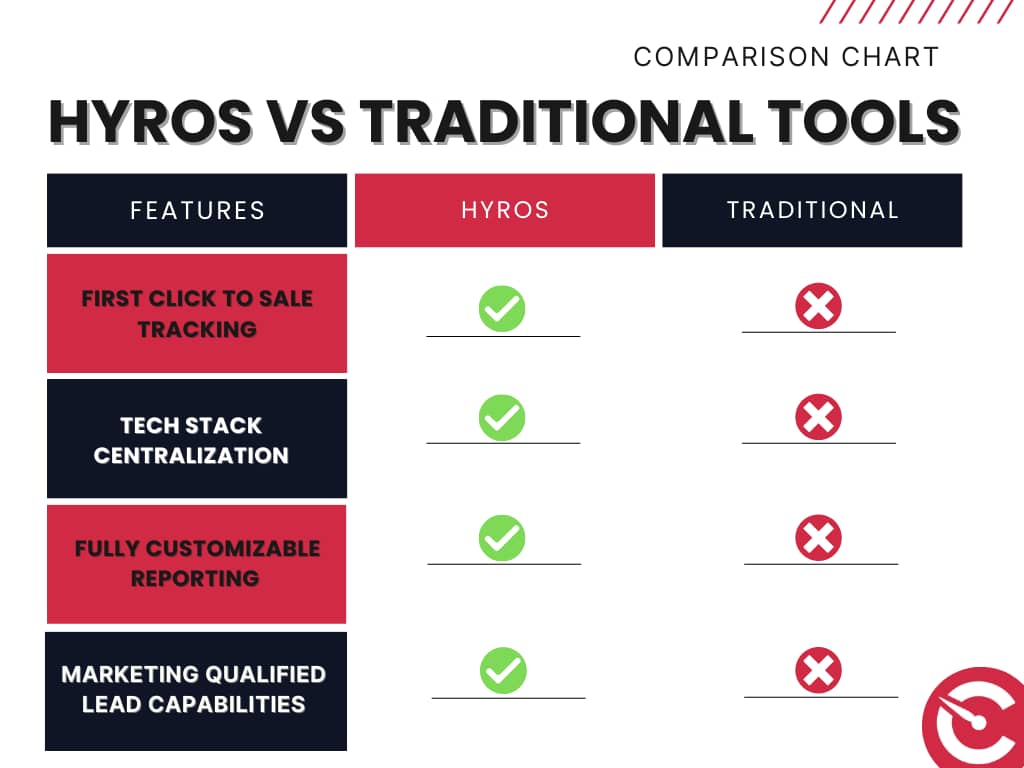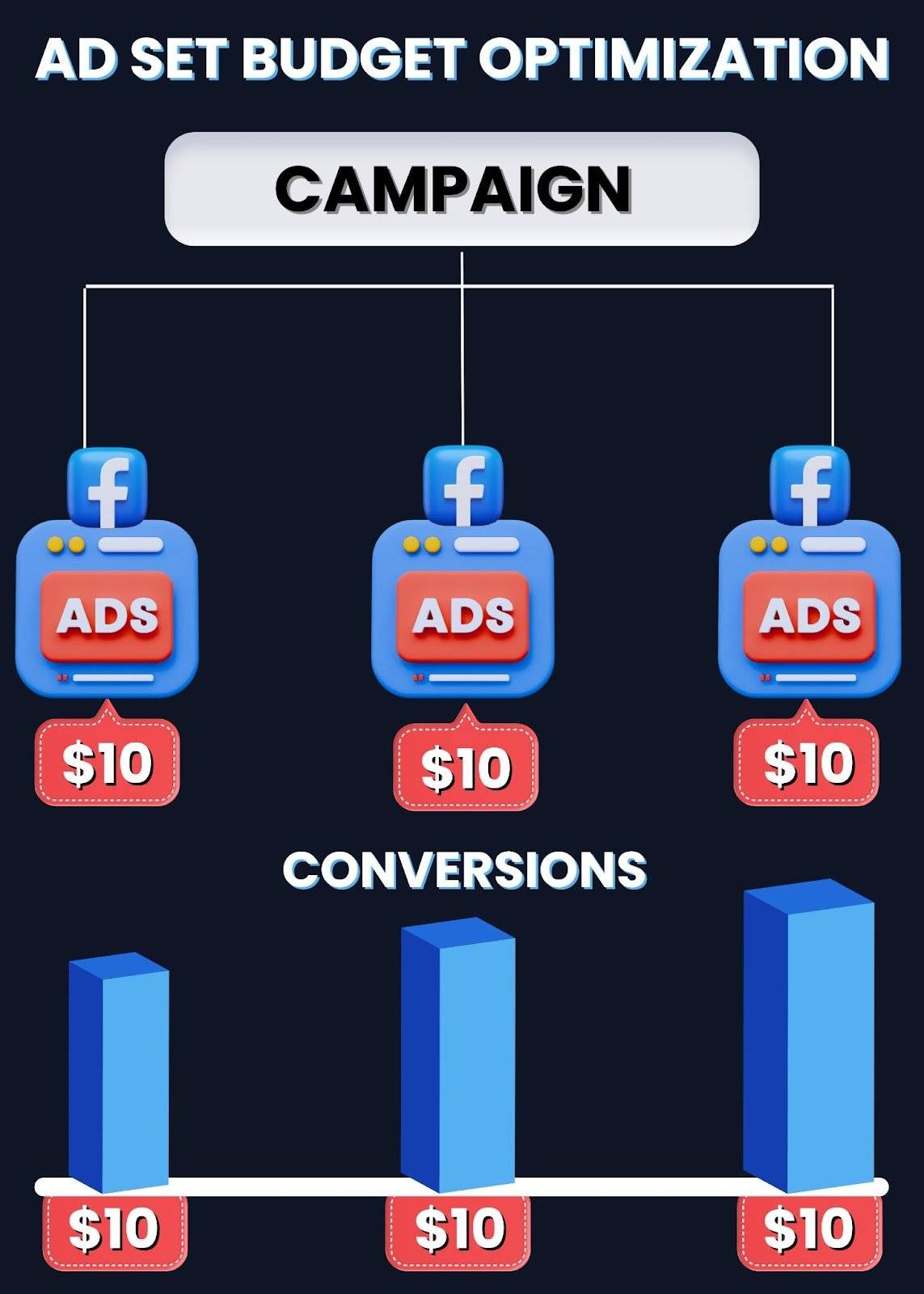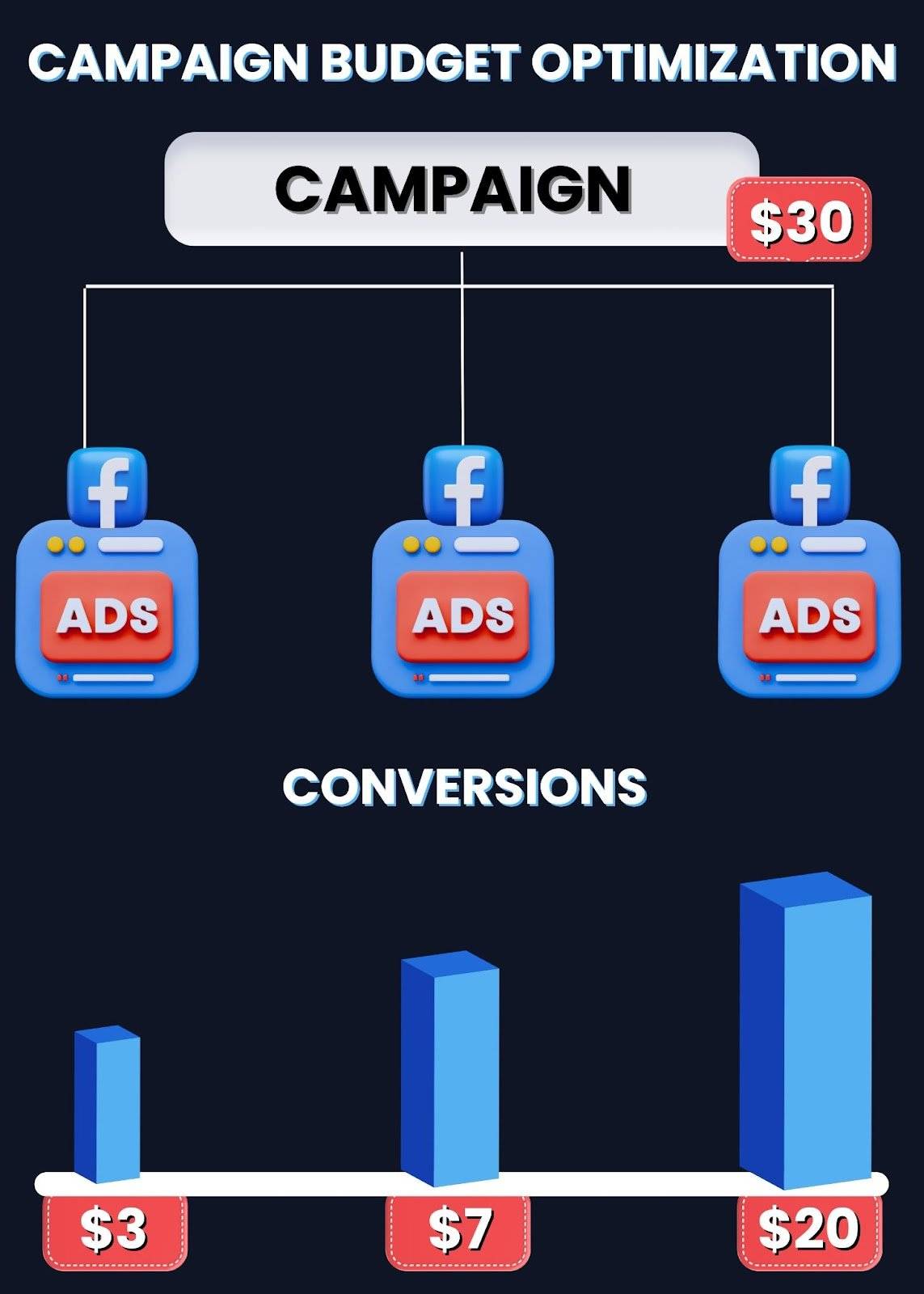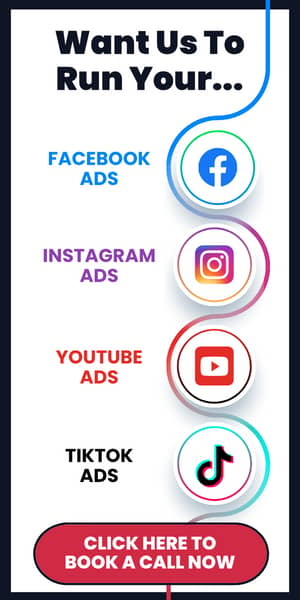Are you among the determined advertisers who’ve invested substantial resources into Facebook ads, only to find your Return on Ad Spend (ROAS) stubbornly plateauing? If you’re nodding your head in agreement, you’re not alone. Mastering the intricacies of Facebook ROAS can be a big challenge—one that leaves even seasoned advertisers grappling for answers.
That’s why we wrote this guide to help you navigate the labyrinth of ROAS optimization. Whether you’re investing over $10k monthly, collaborating with agencies or media buyers, or dreaming of scaling your business to the next level, these ROAS strategies can help.
We know how frustrating it can be. You’re spending big money on ads already. Maybe you’ve even brought in a media buyer or ad agency to help, but you are still not getting the results you want.
But trust us, it’s possible for you to break through the ROAS ceiling that’s been holding you down.
Keep reading to learn how to break down barriers, unveil optimization tactics, and chart a course toward ROAS success. Together, we’ll discover how you can turn your ROAS challenges into opportunities, giving you certainty on the next steps to overcome this plateau and optimize effectively to scale your business to the next level.
What Is Facebook ROAS?
Facebook ROAS, or Return on Ad Spend, is a crucial metric that calculates the revenue generated in relation to the amount spent on Facebook advertising.
In simpler terms, it shows how much money you’re earning for every dollar you invest in ads.
For instance, if you spent $100 on Facebook ads and it resulted in $500 in revenue, your ROAS would be 5x ($500 revenue / $100 ad spend).
What Is The Significance of Facebook ROAS for Your Situation?
We have 8 reasons why your ROAS is a number you must know—and what it can tell you.
Quantifying Returns On Your Strategy: ROAS provides a concrete way to measure the success of your advertising efforts. Instead of just looking at clicks, impressions, leads, calls, or sales, ROAS shows you the direct impact of your ad spend on revenue generation. This is essential for someone investing significant funds into advertising.
Identifying Profitable Channels: For someone already spending a substantial amount on ads, knowing which platforms or campaigns are delivering the best return is crucial. ROAS enables you to identify the most profitable areas of your advertising strategy so you can allocate resources wisely.
Optimizing Budget Allocation: ROAS helps you determine where to focus your budget for maximum impact. If certain campaigns or targeting methods are producing a higher ROAS, you can shift resources to those areas, avoiding wasted spending.
Measuring Agency Performance: If you’re working with an agency or media buyer, ROAS becomes a tangible metric to gauge their effectiveness. It allows you to assess whether their strategies are aligning with your profitability goals.
Unveiling Scaling Opportunities: ROAS can uncover opportunities for scaling your campaigns. If you’re hitting a plateau, analyzing your ROAS can reveal which campaigns have the potential to scale further and where adjustments are needed.
Data-Driven Decisions: ROAS empowers data-driven decision-making. Instead of relying on gut feelings or assumptions, you can make informed choices based on the actual financial impact of your campaigns.
Breaking Through Plateaus: Analyzing ROAS can also help to overcome your current plateau and reach the next level in your business. ROAS provides insights into what’s working and what needs improvement. Adjustments based on ROAS data can lead to breakthroughs.
Maximizing ROI: Ultimately, ROAS is about getting the most value out of your ad spend, ensuring that each dollar you invest generates a positive return.
What Is a “Good ROAS” for Facebook Ads?
Determining a successful Return on Ad Spend (ROAS) on Facebook is crucial for breaking through your current plateau and achieving your desired business growth.
Given the substantial challenges when scaling, here’s how you can approach defining successful ROAS benchmarks and standards:
1. Current Performance Evaluation:
The first step is to evaluate your existing campaigns’ performance. Analyzing current ROAS and comparing it to your ad spend.
If you’re spending $10,000 per month, you need to assess how much revenue you’re generating from these campaigns. This will serve as a starting point for setting new benchmarks.
2. Industry Averages:
For those who are already investing significantly in advertising, it would be wise to research industry-specific benchmarks.
For anyone struggling to scale, aiming for a ROAS above industry averages can help you achieve your growth goals. Industry benchmarks will give you a rough idea of what other businesses in your sector are achieving.
3. Break-Even Point:
Considering your challenges in scaling and the substantial ad spend you could be allocating, aiming for at least a break-even point could be a good initial goal. This means generating enough revenue to cover your ad spend. However, your aspiration should be to surpass this point and achieve a profitable ROAS.
4. Competitive Landscape:
Given that you’re most likely already working with an agency and are facing challenges with your current ROI, it’d be good to consider the competitiveness of your industry. If you’re in a highly competitive space, your ROAS targets might need to be adjusted accordingly because of the lack of market share you’ll be going after.
5. Profitability and Growth Goals:
It is ideal to align your ROAS benchmarks with your profitability and growth objectives. If your current plateau is a result of not achieving desired returns, you might need to aim for a ROAS that ensures both profitability and substantial growth.
6. Incremental Scaling:
Since your goal is probably to break through your current plateau and reach the next level, you can set incremental ROAS targets.
For example, if your current ROAS is 2:1, you could aim for 3:1 or higher as a next-level benchmark. This approach allows you to gauge progress as changes are made to your strategy.
7. Analyzing Historical Data:
If you have historical campaign data, you should analyze trends and patterns. If you’ve seen periods of better performance, you can use those insights to set realistic ROAS targets that align with your past successes. Keeping a log of what you were doing at the time will be important for looking back in the future.
8. Expert Consultation:
Considering you could be working with an agency, you might want to involve their media buyer or seek external experts you trust to help define your ROAS benchmarks.
As professionals in the coaching and consulting space, we can provide insights into what’s achievable based on our industry expertise and campaign analysis over the years. We have looked at campaigns spending up to $100k/day at times in our business and have managed over $150M in ad spend. This cumulative experience and data have allowed us to identify key opportunities on YouTube, Facebook, Instagram, and TikTok which most other agencies cannot see.
We would love to hop on a call with you to review your current marketing performance and let you know what we’re seeing and where you can improve.
9. Iterative Approach:
Breaking a plateau requires a continuous improvement approach. Set initial ROAS targets and continually refine your strategies based on performance data.
Regularly assessing campaigns, adjusting tactics, and reassessing ROAS benchmarks as you see progress. The way we do this with our clients is through weekly progress meetings where we cover the key objectives we set for the quarter, our progress, and the next moves to get us back on track or continue pressing on the goal.
Industry-Specific Facebook ROAS Ranges for Coaching and Consulting:
Coaching and consulting industries can have varying profit margins and customer acquisition costs. Since your customer avatar operates within these sectors, they understand the intricacies of these businesses.
Here’s how Facebook ROAS ranges might differ based on industry specifics:
ROAS Range: 3:1 to 5:1 (varies based on factors below)
Factors Influencing Range:
- Coaching niche (life coaching, career coaching, executive coaching, etc.)
- Service offerings (group coaching, one-on-one sessions, online courses)
- Average customer lifetime value (LTV)
- Sales velocity (longer sales cycles might have lower ROAS on the front end)
- Level of competition (more competitive niches might lead to lower ROAS)
ROAS Range: 2:1 to 4:1 (varies based on factors below)
Factors Influencing Range:
- Consulting specialization (management, marketing, financial industry, etc.)
- High-value services vs. lower-priced consultations
- Complexity of the solutions offered
- Target audience size and demographics
- Geographic reach (local vs. global consultancy)
Factors Influencing Facebook ROAS Variations:
Product Type and Pricing: Higher-priced coaching packages or consulting services generally lead to higher ROAS due to the higher revenue generated from each customer. Conversely, lower-priced offerings generally tend to necessitate a lower ROAS because of the lower AOV and the same cost per thousand impressions (CPMs) on the ad platform.
Business Objectives: Since you are likely focused on rapidly scaling your business, you might initially aim for a lower ROAS as you invest in growth. We’ve seen businesses perform extremely consistently at a 2.0 ROAS and bring up six figures in profit or more per month.
Audience Size and Reach: Smaller, highly targeted audiences often yield lower conversions and lead to lower ROAS due to limited reach and higher traffic costs. A broader audience generally will yield lower costs and can be scaled more effectively on Facebook ads. We have seen that the more blue ocean your offer is, the higher your potential for an above-average ROAS.
Customer Lifetime Value (CLTV): If coaching or consulting services have a high CLTV, a lower-than-average ROAS on the front end is often acceptable because the long-term revenue justifies the investment. This is why it’s absolutely critical to measure your future revenues on top of your cash flow going into your business.
Sales Cycle Length: Longer sales cycles require much more investment and patience, as the lead nurturing process requires more touchpoints before the sales conversion.
If your average sales cycle is 30 days, then you likely won’t see a sale from your advertising efforts until 30 days which can be discouraging. However, knowing and understanding this data will give you the certainty you need in order to push forward with conviction you’re about to hit gold.
How to Calculate Facebook ROAS
The formula to calculate Facebook ROAS is simple: Take your revenue from ads and divide it by the ad spend:
ROAS = (Revenue from Ads) / (Ad Spend)
In this formula:
Revenue from Ads refers to the total revenue generated directly as a result of your Facebook ad campaigns.
Ad Spend is the total amount of money you’ve spent on running your Facebook ad campaigns.
Calculating ROAS Using Real-Life Figures
For example, if you look at the “Last 30 Days Report” and get these numbers:
Revenue From Facebook Ads: $30,000
Ad Spend: $10,000
Then you can calculate your ROAS like this:
$30,000 / $10,000 = 3:1 Ratio
ROAS: 3:1
How to Get More Out of Your Facebook ROAS
Step #1 - Analyze Your Current Performance
Accurate Tracking
The problem with analyzing your current performance in today’s online advertising ecosystem is that Facebook Ads reporting is inaccurate. To be able to understand your performance, you cannot be relying on inaccurate data when baselining your metrics.
When you get an accurate tracking setup by using a platform such as Hyros or Segmetrics, you will be able to create baseline models so you can gain an accurate understanding of where you are in your current state of business.
Our personal favorite ad-tracking platform is Hyros and we’ve been using their software since the beta launch program. Setting up Hyros will allow you to accurately baseline your metrics and will set you up for success with doing projections to hit your ROAS goals.

GERU Baseline
Once you have verified your metrics are accurate and have baselined them using a third-party tracking source, you will now have the ability to set up your baseline model in GERU.
A baseline model represents your funnel from a holistic perspective and is built keeping in mind the conversion rates at each point of your funnel. This end-to-end look at your funnel will allow you to make strategic decisions about how to make improvements to your funnel in order to hit your ROAS goals.
The beauty of GERU is that it gives you the ability to see how the conversion rates of each point in your funnel will ultimately impact your ROAS.
The power of creating projections for your business and marketing efforts is unprecedented in its ability to give you a crystal clear vision of where you need to be dedicating your time and resources to your business.
Step #2 - Implement Strategic Campaign Optimization Strategies
Ad set Budget Optimization
ABO optimization is the essential strategy we are using to get more control over our campaigns when we have a cold ad account.

Facebook’s algorithm does have a great ability to leverage all the pixel data it takes in to be able to optimize your campaigns.
However, when you do not have much data in your account, you would be wise to want to take as much control over your budget as you can.
Typically when you set up campaigns, there are multiple ad sets within each campaign.
An ad set is a group of ads that target a specific audience, placement, and other settings.
When you set the budget at the ad set level in the beginning, you will be able to quickly adapt your ad strategy to get the best results at the start of your account. It can also be a great option for testing new variables later on in the aging of your account.
Campaign Budget Optimization
CBO optimization on the other hand does much better once you have some really good data in your account.

The level of account maturity really does make a difference here. This is because the more data Facebook has to use from you, the more it can optimize properly for the conversions you’re looking for.
We love to take our best-performing combinations of targeting options and creativity and stack them into a CBO campaign to allow Facebook to take the reigns.
Facebook’s algorithm then takes over the budget allocation process. It dynamically allocates the campaign budget to the various ad sets based on real-time performance data. The algorithm shifts more budget toward ad sets that are performing well and may allocate less budget to ad sets with lower performance.
Step #3 - Structure Your Campaigns For Optimal Results
4 Types of Cold Audiences To Build Into Your Ad Account Structure
Lookalike Audiences: Facebook finds users who share similar demographics, behaviors, and interests with your current audience.
Single Interests: Targeting based on specific hobbies, interests, and activities can help you reach users who are likely to be interested in your offerings.
Stacked Interests: Same as interests above but stacked to increase the potential outreach.
Exclusion Lists: For example, you might want to exclude existing customers or previous website visitors from your cold audience targeting.
Pro Tip: You can also build a list of unqualified leads you’ve either talked to on the phone or who have filled out your application.
Then you can create a lookalike audience from these leads to test in your exclusions.
Step #4 - Building Audiences For Retargeting
4 Types of Retargeting Audiences To Build Into Your Ad Account Structure
Website Visitors: You can create segments of people who have visited specific pages, added items to their cart, initiated checkout, completed a purchase, etc.
Engagement Type: These audiences are based on user engagement with your Facebook or Instagram content. You can create audiences of people who have engaged with your videos, ads, lead forms, Facebook Page, or Instagram business profile.
Video Viewers: You can create audiences of users who have watched a certain percentage of your video content on Facebook or Instagram. This includes engagement on any of your ads or videos you’ve posted organically.
Custom Events: These audiences are created based on interactions with Facebook Events. You can target users who have responded to your events, shown interest, clicked specific buttons, or attended your webinar or VSL.
Step #5 - Peak Timing For Optimizing Towards Events
When you’re starting a brand new campaign strategy, you’ll want to leverage the first event in your funnel which is often the Lead event. The general rule of thumb we follow for moving to the next event down the line is when we get at least 100 conversions.
For example, when we get to 100 booked calls, we’ll begin testing and optimizing our campaigns around the Complete Registration event. Furthermore, when we get to 100 sales, we’ll begin testing campaigns optimizing around the Purchase event.
Increase Your Facebook ROAS With Client Accelerators
You’ve learned how to calculate Facebook ROAS, what is a good ROAS for Facebook ads, what a Facebook ROAS benchmark is, and the average ROAS for Facebook, which has equipped you with the insights needed to revolutionize your ad strategy.
Now, imagine scaling your success without the hassle of implementing it all yourself. Enter Client Accelerators—the partner you’ve been searching for. Working with us is like installing a dedicated marketing department into your business…at a fraction of the cost!
Picture this: We build the systems, we fine-tune the strategies, and all we need from you is to capture the footage for your ads. It’s a comprehensive solution that lets you focus on what you do best, while we stay on top of the ever-evolving landscape of Facebook ads on your behalf.
Don’t let your newfound knowledge go to waste. Turn it into action with a powerhouse team by your side. Book a call to see how optimization can become second nature and how scaling your business feels exciting again.
Your success story is just a click away. Schedule a call now to discuss scaling your Facebook ads and how we can help you boost your Facebook ROAS.



